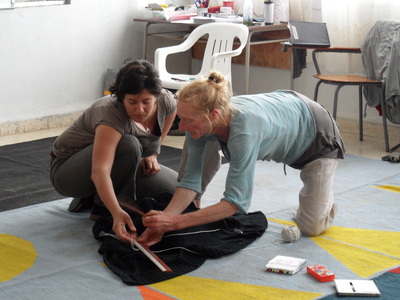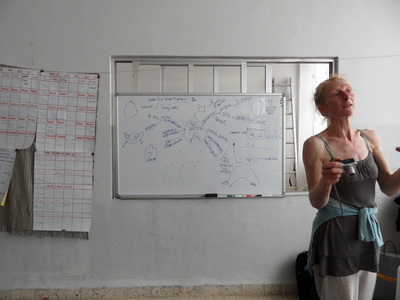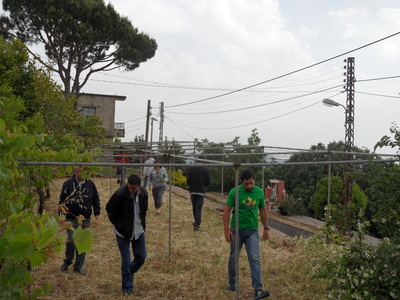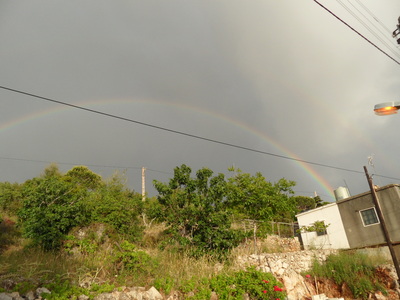We've all learned about the water cycle in school and we take it for granted, but we never imagined it could be fun to revisit it until today.
The day started under a hot beating sun until we "experienced" the water cycle with a meditation exercise that left all of us in awe. No sooner had we finished than we heard the rumbling of thunder in the distance and a light rain started falling. It kept drizzling well into the afternoon and gave us a unique chance to witness not the one but 2 rainbows that can rarely be seen together with the naked eye.
Klaudia and Betty explained Bill Mollison's 4 directives when it comes to water. The guiding principle behind these can be summarized in 3 words: Slow, spread, sink. They concern methods of reducing water waste and soil erosion (we soon found out water and soil are very intimately linked together), harvesting rainwater and moisture, and also using clean water both for our bodies and when releasing it back to the earth.
It was then time for our afternoon practical session with our friends from the village. Betty surprised us once again with exotic recipes using natural ingredients to encourage effective microorganisms in plants and in soils. Preparing these formulas turned into a treasure hunt around the village, looking for such things as green shoots, bran, chicken manure, coal, rice water and other unlikely ingredients.
And that effectively laid the groundwork for tomorrow's topic: soils.
The day started under a hot beating sun until we "experienced" the water cycle with a meditation exercise that left all of us in awe. No sooner had we finished than we heard the rumbling of thunder in the distance and a light rain started falling. It kept drizzling well into the afternoon and gave us a unique chance to witness not the one but 2 rainbows that can rarely be seen together with the naked eye.
Klaudia and Betty explained Bill Mollison's 4 directives when it comes to water. The guiding principle behind these can be summarized in 3 words: Slow, spread, sink. They concern methods of reducing water waste and soil erosion (we soon found out water and soil are very intimately linked together), harvesting rainwater and moisture, and also using clean water both for our bodies and when releasing it back to the earth.
It was then time for our afternoon practical session with our friends from the village. Betty surprised us once again with exotic recipes using natural ingredients to encourage effective microorganisms in plants and in soils. Preparing these formulas turned into a treasure hunt around the village, looking for such things as green shoots, bran, chicken manure, coal, rice water and other unlikely ingredients.
And that effectively laid the groundwork for tomorrow's topic: soils.










 RSS Feed
RSS Feed
